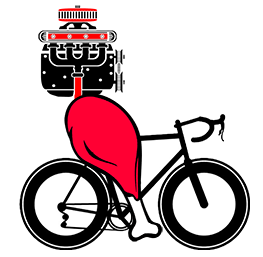Study Summary
Researchers analyzed 13 commonly used equations that estimate an endurance athlete’s maximal oxygen uptake (VO2max), which is a measure of cardiovascular fitness. They wanted to determine how precise these estimates are for competitive endurance athletes. The study looked at over 5,000 endurance athletes who had their actual VO2 max measured during a cardiopulmonary exercise test (CPET).
The results showed that none of the prediction equations precisely estimated an endurance athlete’s actual VO2 max. The accuracy ranged from very poor to moderately good. Models for younger athletes tended to underestimate their VO2 max, while older athletes had their V02 max overestimated. In general, equations developed from athletic populations were more accurate for endurance athletes than those developed for the general population. Equations that incorporated factors like the athlete’s sport, age, and sex tended to be more precise. However, even the best equations had error rates around 5-10%.
The conclusions from this study are:
- Prediction equations cannot replace direct measurement of VO2 max for competitive endurance athletes. The estimates are not sufficiently accurate for high-performance training.
- Equations derived from athletic populations are better but still imperfect. They may be useful for recreational endurance athletes looking to gauge their cardiovascular fitness but should not form the basis of a training plan for competition.
- The best available equations consider an athlete’s age, sex, and sport. However, no equation provides an exact VO2 max prediction for any individual endurance athlete. More research is needed to develop improved formulas.
For endurance athletes, the practical implications are:
- Get your actual VO2 max measured by CPET at least once to establish your baseline cardiovascular fitness. Prediction equations cannot substitute for this measurement.
- Be skeptical of any formula that claims to precisely predict your VO2 max or prescribe a training plan based solely on prediction. These estimates have too much error to be reliably used that way.
- Consider using athletic population-derived equations to gauge your general fitness over seasons and years but not to determine if you’ve reached optimal cardio fitness for your goals. Only CPET can provide that level of accuracy.
In summary, while prediction equations for VO2max can provide a rough sense of an endurance athlete’s cardio fitness, they lack the precision and accuracy needed for high-performance training and competition. Whenever possible, direct VO2max measurement should be prioritized.
Abstract
External validation of VO2max prediction models based on recreational and elite endurance athletes
In recent years, numerous prognostic models have been developed to predict VO2max. Nevertheless, their accuracy in endurance athletes (EA) stays mostly unvalidated. This study aimed to compare predicted VO2max (pVO2max) with directly measured VO2max by assessing the transferability of the currently available prediction models based on their R2, calibration-in-the-large, and calibration slope. 5,260 healthy adult EA underwent a maximal exertion cardiopulmonary exercise test (CPET) (84.76% male; age 34.6±9.5 yrs.; VO2max 52.97±7.39 mL·min-1·kg-1, BMI 23.59±2.73 kg·m-2). 13 models have been selected to establish pVO2max. Participants were classified into four endurance subgroups (high-, recreational-, low- trained, and “transition”) and four age subgroups (18–30, 31–45, 46–60, and ≥61 yrs.). Validation was performed according to TRIPOD guidelines. pVO2max was low-to-moderately associated with direct CPET measurements (p>0.05). Models with the highest accuracy were for males on a cycle ergometer (CE) (Kokkinos R2 = 0.64), females on CE (Kokkinos R2 = 0.65), males on a treadmill (TE) (Wasserman R2 = 0.26), females on TE (Wasserman R2 = 0.30). However, selected models underestimated pVO2max for younger and higher trained EA and overestimated for older and lower trained EA. All equations demonstrated merely moderate accuracy and should only be used as a supplemental method for physicians to estimate CRF in EA. It is necessary to derive new models on EA populations to include routinely in clinical practice and sports diagnostic.
PLoS ONE 18(1): e0280897. 2023
https://doi.org/10.1371/journal.pone.0280897
Authors: Szczepan Wiecha ,Przemysław Seweryn Kasiak,Igor Cieśliński,Tim Takken,Tomasz Palka,Beat Knechtle,Pantelis Τ. Nikolaidis,Łukasz A. Małek,Marek Postuła,Artur Mamcarz,Daniel Śliż
Listen to the Two Minute Audio Summary

Jordan Fowler has experience as a head swimming coach of the Frisco Swim Team, a TAAF-awarded coach, a track and field distance running consultant for select Texas High School runners, and has competed as a triathlete, road runner, and cyclist. Though he is remarkably slower than he was in his 20s and 30s, he still enjoys endurance sports and sports science studies.
